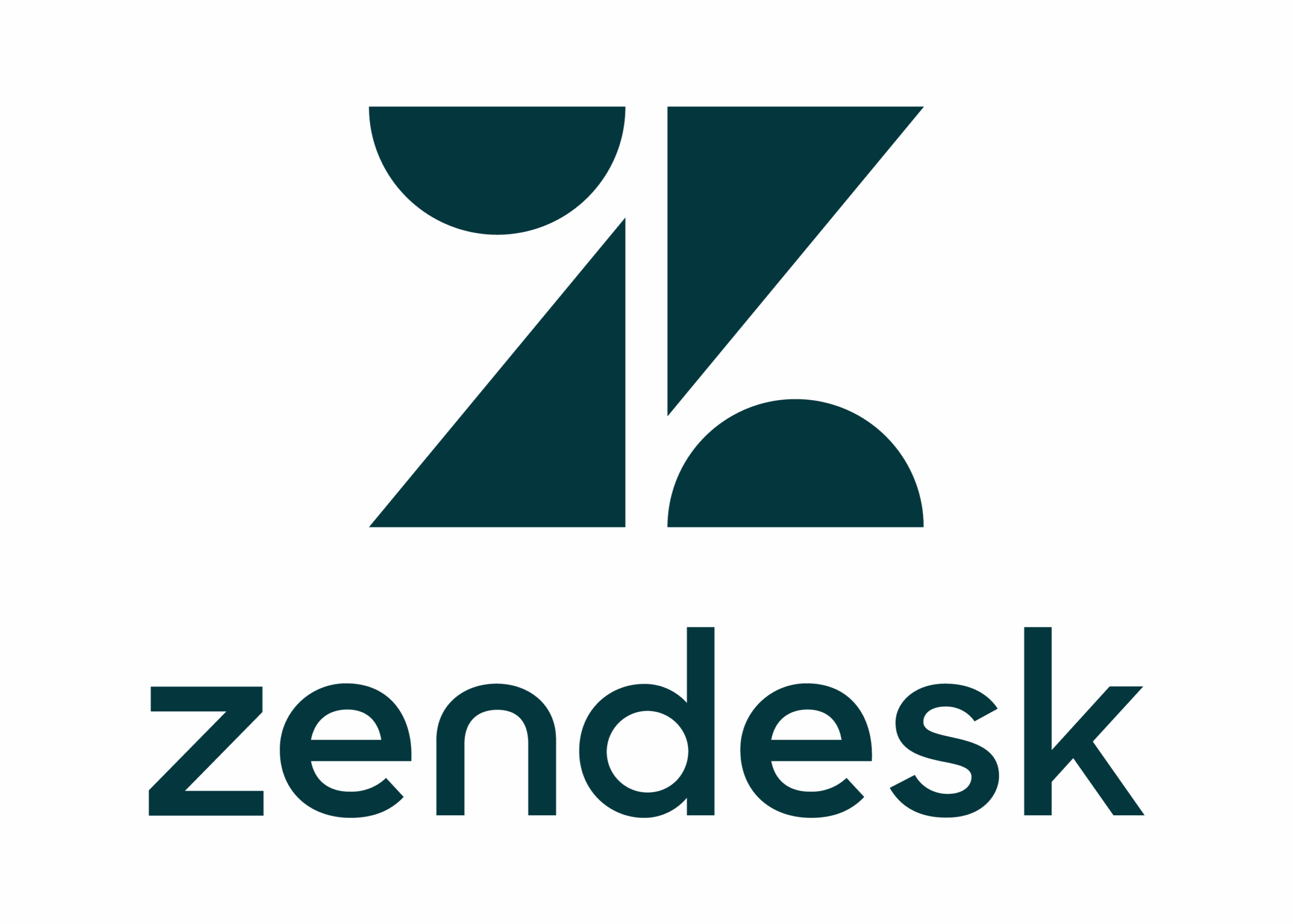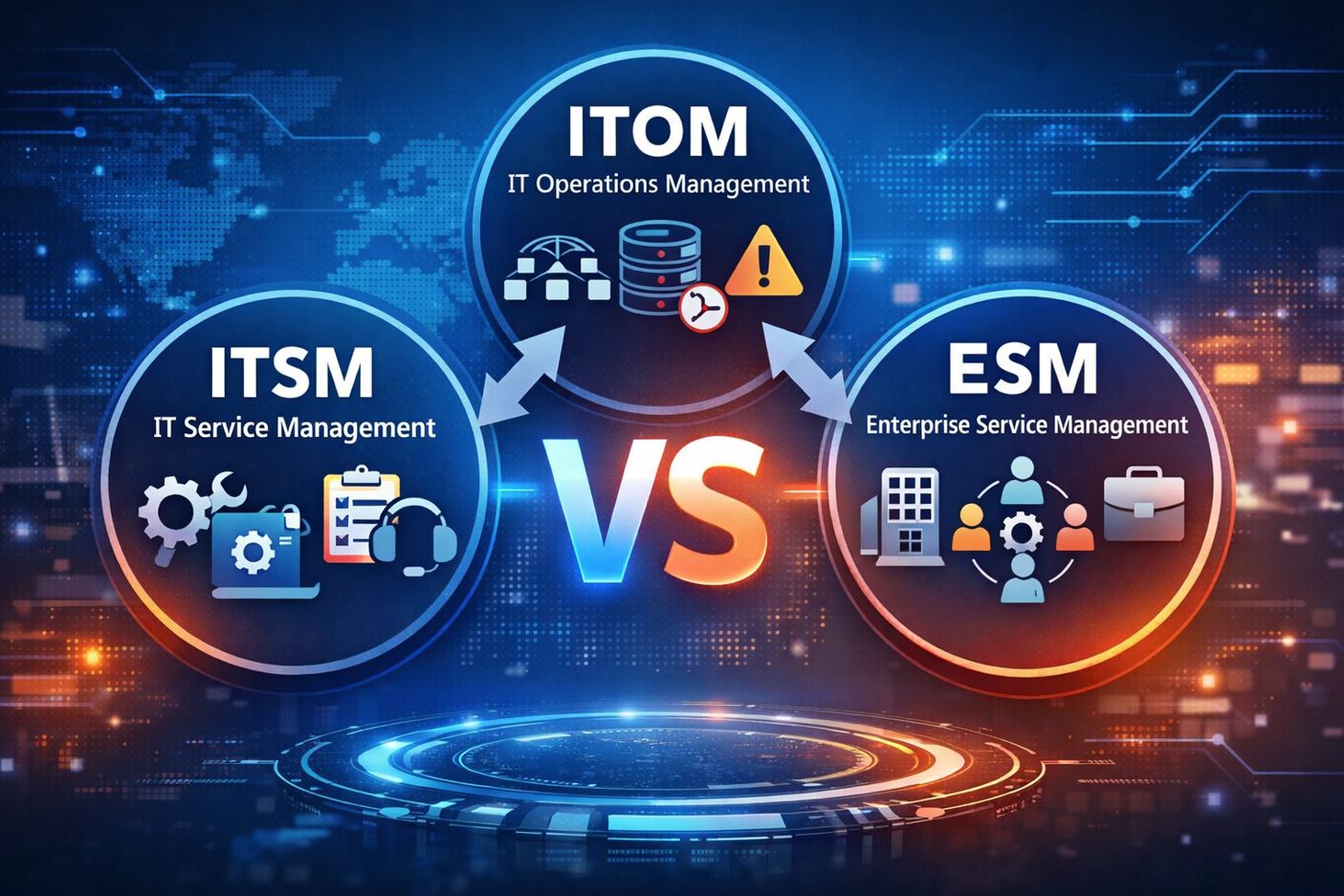How to Choose the Best ITSM Platform and What to Pay Attention to?

Choosing the right IT Service Management (ITSM) platform is a critical decision that can significantly impact your organization’s operational efficiency, service delivery, and overall IT performance. With numerous solutions available in the market, each offering different features, pricing models, and capabilities, making an informed choice requires careful consideration of multiple factors. This comprehensive guide will walk you through everything you need to know about selecting the best ITSM platform for your organization’s unique needs.
Table of Contents
- Quick Summary
- What Are the Key Points to Consider When Choosing an ITSM Platform?
- What Makes a Great ITSM Platform in Today’s Digital Landscape?
- How Do Leading ITSM Platforms Compare?
- What Budget Considerations Should You Keep in Mind?
- How Important Is Integration Capability?
- What Role Does User Experience Play?
- How Can You Evaluate Vendor Support and Reliability?
- What Security Features Are Essential?
- How Do You Plan for Scalability?
- Summing up
- Frequently Asked Questions
- Benefits of Cooperation with Solution for Guru
Quick Summary
Selecting the right ITSM platform requires evaluating several critical factors including functionality, scalability, integration capabilities, user experience, security, and total cost of ownership. Leading platforms like Freshservice, ManageEngine, and Zendesk each offer unique strengths: Freshservice excels in user-friendly design and AI-powered automation, ManageEngine provides comprehensive enterprise-grade features at competitive pricing, while Zendesk offers exceptional omnichannel support capabilities. Beyond the software itself, partnering with experienced implementation specialists like Solution for Guru (https://www.solution4guru.com/) can ensure successful deployment and ongoing optimization. This guide explores essential selection criteria, compares top platforms, and provides actionable insights to help you make an informed decision that aligns with your organization’s goals and budget.
What Are the Key Points to Consider When Choosing an ITSM Platform?
When evaluating ITSM platforms, it’s essential to approach the selection process systematically. Consequently, understanding the fundamental criteria will help you narrow down your options effectively and make a decision that serves your organization both now and in the future.
Core Functionality Requirements
First and foremost, your ITSM platform must deliver robust core functionalities that align with ITIL (Information Technology Infrastructure Library) best practices. These include incident management, problem management, change management, asset management, and service catalog capabilities. Moreover, the platform should support your specific workflows without requiring excessive customization.
Different organizations have varying needs based on their size, industry, and IT maturity level. Therefore, it’s crucial to create a detailed requirements document that outlines must-have features versus nice-to-have capabilities. This clarity will prevent you from being swayed by flashy features that don’t address your actual business needs.
Deployment Options
Additionally, you need to decide between cloud-based, on-premises, or hybrid deployment models. Cloud solutions offer faster implementation, automatic updates, and lower upfront costs, making them ideal for organizations seeking agility and reduced IT overhead. On the other hand, on-premises deployments provide greater control over data and customization but require significant infrastructure investment.
Hybrid models combine both approaches, allowing you to keep sensitive data on-premises while leveraging cloud capabilities for other functions. Ultimately, your choice should reflect your organization’s security requirements, compliance obligations, and IT resources.
Vendor Reputation and Stability
Furthermore, investigating the vendor’s market position, financial stability, and track record is vital. Established vendors with proven expertise are more likely to provide reliable support, continuous innovation, and long-term viability. Research customer reviews, case studies, and analyst reports from firms like Gartner or Forrester to gain insights into vendor performance.
Nevertheless, don’t automatically discount newer vendors if they offer innovative solutions that specifically address your pain points. Balance innovation with stability, and always request references from organizations similar to yours in size and industry.
What Makes a Great ITSM Platform in Today’s Digital Landscape?
The digital transformation wave has fundamentally changed what organizations expect from their ITSM platforms. Accordingly, modern ITSM solutions must go beyond basic ticketing to deliver strategic value across the enterprise.
Automation and AI Capabilities
Today’s leading ITSM platforms incorporate artificial intelligence and machine learning to automate routine tasks, predict issues before they impact users, and provide intelligent recommendations. Freshservice, for instance, leverages AI-powered chatbots and automated workflow capabilities that can resolve common incidents without human intervention, significantly reducing response times and freeing up IT staff for more strategic work.
Similarly, automation features should include automated ticket routing, escalation rules, and self-healing capabilities. These functionalities not only improve efficiency but also enhance consistency in service delivery and reduce human error.
Mobile Accessibility
In an increasingly mobile workforce, your ITSM platform must provide full functionality through mobile applications. Both technicians and end-users should be able to submit tickets, check status updates, approve changes, and access the knowledge base from their smartphones or tablets.
Consequently, evaluate whether the platform offers native mobile apps for iOS and Android, and test their usability thoroughly. A well-designed mobile experience can dramatically improve response times and user satisfaction, particularly for field technicians and remote workers.
Self-Service Capabilities
Moreover, robust self-service portals empower users to resolve issues independently, reducing the burden on your IT service desk. An effective self-service portal should include an intuitive service catalog, comprehensive knowledge base, automated chatbots, and status tracking capabilities.
Zendesk, renowned for its customer service expertise, brings these same principles to IT service management with exceptional self-service functionality. Their platform enables organizations to create branded portals with powerful search capabilities, community forums, and guided workflows that make it easy for users to find answers quickly without submitting tickets.
How Do Leading ITSM Platforms Compare?
Understanding the strengths and weaknesses of major ITSM platforms helps you identify which solution best matches your organization’s needs. Let’s examine three prominent options that consistently rank among the top choices for businesses of various sizes.
Freshservice: Modern, User-Friendly ITSM
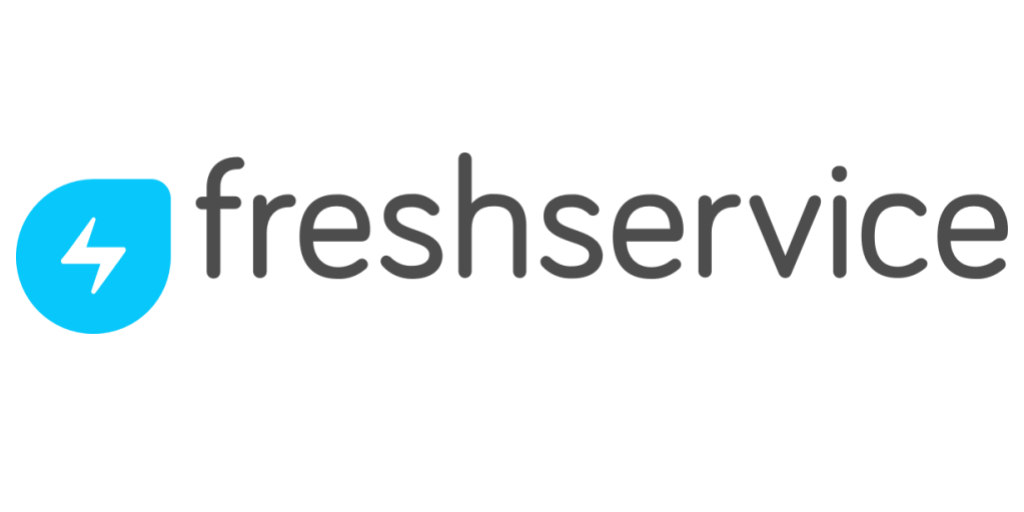
Freshservice has gained significant traction in the ITSM market by focusing on ease of use and rapid deployment. Built on the same platform as Freshdesk, it brings consumer-grade user experience to enterprise IT service management.
The platform’s key strengths include:
Intuitive Interface: Freshservice prioritizes user experience with a clean, modern interface that requires minimal training. This is particularly valuable for organizations transitioning from legacy systems or introducing ITSM practices for the first time.
Quick Implementation: Unlike traditional ITSM solutions that can take months to deploy, Freshservice can be up and running in weeks. The platform’s pre-configured workflows and templates accelerate time-to-value significantly.
AI-Powered Automation: Freddy AI, Freshservice’s artificial intelligence engine, provides predictive capabilities, automated ticket categorization, and intelligent chatbot functionality. These features help organizations handle higher ticket volumes with the same staff.
Flexible Pricing: Freshservice offers transparent, per-agent pricing that scales with your organization. This makes it accessible to small and medium-sized businesses while still providing enterprise-grade capabilities.
However, organizations with highly complex workflows or extensive customization requirements might find Freshservice somewhat limiting compared to more configurable enterprise platforms. Nevertheless, for most organizations seeking a balance between functionality and usability, Freshservice represents an excellent choice.
ManageEngine: Comprehensive Enterprise Solution

ManageEngine ServiceDesk Plus is part of the broader ManageEngine portfolio from Zoho Corporation, offering deep functionality particularly suited for enterprise IT environments with complex requirements.
Key advantages include:
Extensive Feature Set: ManageEngine provides comprehensive ITIL-aligned capabilities including advanced asset management, project management, purchasing integration, and contract management. This breadth makes it suitable for organizations seeking an all-in-one solution.
Customization Options: The platform offers extensive customization capabilities, allowing organizations to tailor workflows, forms, and reports to match their specific processes. This flexibility is particularly valuable for enterprises with established IT practices.
Strong Asset Management: ManageEngine excels in IT asset management (ITAM), providing robust discovery, tracking, and lifecycle management capabilities. The integration between ITSM and ITAM modules creates powerful synergies for organizations managing complex IT estates.
Competitive Pricing: Compared to legacy enterprise ITSM platforms, ManageEngine offers attractive pricing, particularly for on-premises deployments. This value proposition makes enterprise-grade ITSM accessible to mid-market organizations.
On the flip side, some users find the interface less modern than newer cloud-first platforms, and the extensive functionality can create a steeper learning curve. Nevertheless, organizations prioritizing depth of functionality and customization often find ManageEngine to be an ideal fit.
Zendesk: Omnichannel Service Excellence
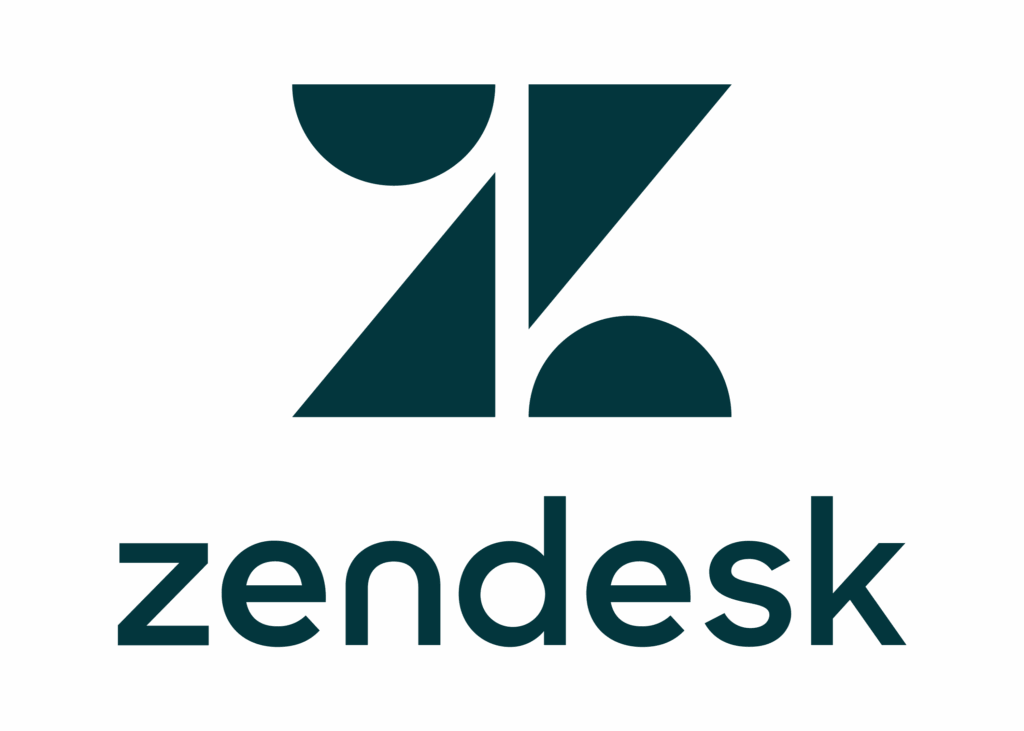
While Zendesk initially built its reputation in customer service, its ITSM capabilities have matured significantly, bringing customer service best practices to IT support.
Distinctive features include:
Omnichannel Support: Zendesk excels at managing support across multiple channels—email, chat, phone, social media, and self-service—with seamless conversation threading. This capability is particularly valuable for organizations supporting diverse user bases.
Knowledge Management: The platform’s knowledge base functionality is among the best in class, with powerful content creation tools, analytics to identify knowledge gaps, and AI-powered article suggestions that surface relevant content contextually.
Collaboration Features: Zendesk facilitates collaboration between IT teams and other departments through integrated ticketing, shared inboxes, and side conversations. This breaks down silos and improves cross-functional issue resolution.
Extensive Marketplace: The Zendesk Marketplace offers hundreds of integrations and apps, making it easy to extend functionality and connect with other business systems. This ecosystem approach provides flexibility to adapt the platform to your specific needs.
However, organizations requiring deep ITIL process compliance or advanced IT asset management might find Zendesk less comprehensive than platforms specifically designed for IT environments. Nonetheless, for organizations valuing user experience, omnichannel capabilities, and modern collaboration, Zendesk offers compelling advantages.
Comparative Overview
What Budget Considerations Should You Keep in Mind?
Financial planning for ITSM implementation extends well beyond the initial license costs. Therefore, adopting a total cost of ownership (TCO) perspective ensures you accurately assess the investment required.
Licensing Models and Hidden Costs
ITSM platforms typically employ per-agent or per-technician pricing, though the specifics vary considerably. Freshservice and Zendesk generally use per-agent monthly subscription models, while ManageEngine offers both subscription and perpetual licensing options.
Furthermore, watch for additional costs that may not be immediately apparent:
- Additional modules: Many platforms charge extra for advanced features like project management, advanced analytics, or survey capabilities
- Storage fees: Cloud platforms may charge for storage exceeding included limits
- API usage: Some vendors charge for API calls beyond certain thresholds
- Training costs: Factor in the expense of training staff on the new platform
- Consulting fees: Implementation assistance, customization, and integration often require professional services
Additionally, consider the indirect costs of implementation, including internal staff time, potential productivity dips during transition, and data migration efforts.
Long-Term Value Assessment
Moreover, evaluate the platform’s ability to deliver ongoing value through productivity improvements, reduced downtime, improved service quality, and better resource utilization. Calculate metrics such as:
- Reduced mean time to resolution (MTTR): How much faster can you resolve incidents?
- Self-service adoption rate: What percentage of issues can users resolve without IT intervention?
- First-call resolution improvement: How often are issues resolved on initial contact?
- Cost per ticket reduction: What’s the total cost to handle each service request?
These metrics help justify the investment and demonstrate ROI to stakeholders. Consequently, platforms like ManageEngine that offer robust reporting and analytics capabilities make it easier to track and communicate these improvements over time.
How Important Is Integration Capability?

In today’s interconnected technology ecosystem, your ITSM platform cannot operate in isolation. Therefore, seamless integration with existing systems is absolutely critical for operational efficiency and data accuracy.
Essential Integration Points
Your ITSM platform should integrate smoothly with:
Identity Management Systems: Active Directory, LDAP, or cloud identity providers like Azure AD or Okta for single sign-on and automated user provisioning.
Monitoring and Alerting Tools: Platforms like Nagios, Prometheus, or SolarWinds to automatically create incidents when issues are detected, reducing manual ticket creation and accelerating response.
Configuration Management Databases (CMDB): Integration with discovery tools and CMDBs ensures accurate asset data and enables impact analysis during incidents.
Collaboration Platforms: Microsoft Teams, Slack, or other communication tools to enable notifications, approvals, and updates without leaving your collaboration environment.
Business Applications: ERP, CRM, HR systems, and other business applications to ensure data consistency and enable cross-functional workflows.
Both Freshservice and Zendesk offer extensive marketplaces with pre-built integrations, while ManageEngine provides robust APIs and webhooks for custom integration development. Consequently, evaluate not just whether integrations exist, but how well they work and whether they meet your specific requirements.
API Quality and Flexibility
Furthermore, examine the platform’s API documentation, rate limits, and supported operations. Well-designed APIs enable you to build custom integrations, automate processes, and extract data for analytics. Look for:
- RESTful API design: Modern, standards-based approaches are easier to work with
- Comprehensive documentation: Clear examples and detailed endpoint descriptions
- Reasonable rate limits: Sufficient capacity for your integration needs
- Webhook support: Real-time event notifications for responsive integrations
Additionally, consider whether the platform supports industry-standard integration approaches like SCIM for identity management or ITSM integration protocols for connecting with other IT management tools.
What Role Does User Experience Play?
User experience (UX) directly impacts adoption rates, productivity, and overall satisfaction with your ITSM platform. Therefore, prioritizing intuitive design and ease of use delivers tangible business benefits.
Impact on Adoption and Efficiency
An ITSM platform with poor user experience faces resistance from both IT staff and end-users, leading to workarounds, shadow IT, and reduced ROI. Conversely, platforms like Freshservice and Zendesk that emphasize consumer-grade experiences see higher adoption rates and faster time-to-value.
Moreover, intuitive interfaces reduce training requirements, minimize errors, and enable staff to focus on solving problems rather than navigating complex systems. When evaluating user experience, consider:
End-User Portal: Is it easy for non-technical users to submit tickets, search the knowledge base, and track their requests? Does it work well on mobile devices?
Technician Interface: Can IT staff quickly access relevant information, update tickets, and move between tasks efficiently? Are common actions streamlined?
Administrative Console: How easy is it to configure workflows, generate reports, and manage the system? Can non-developers make changes without extensive training?
Customization vs. Complexity
Nevertheless, be cautious of platforms that prioritize customization over usability. While flexibility is valuable, overly complex configuration options can make the system difficult to manage and maintain.
Therefore, seek platforms that offer the right balance: enough customization to match your processes, but with sensible defaults and templates that work out of the box. ManageEngine provides extensive customization options for organizations with complex requirements, while Freshservice focuses on simplicity with targeted customization capabilities – choose based on your organization’s complexity and resources.
How Can You Evaluate Vendor Support and Reliability?
The quality of vendor support can make or break your ITSM implementation and ongoing operations. Consequently, thoroughly assessing support offerings and service reliability should be a key selection criterion.
Support Options and SLAs
Investigate what support channels the vendor offers—email, phone, chat, self-service portal—and what response times you can expect. Furthermore, examine whether premium support tiers are available and what they include.
Key questions to ask:
- What are the support hours? 24/7, business hours only, or somewhere in between?
- What response time SLAs are guaranteed? How quickly will critical issues be addressed?
- Is support included in base pricing or an additional cost? Some vendors charge extra for phone support or faster response times.
- What’s the quality of documentation and community resources? Self-service resources can significantly reduce dependence on vendor support.
Additionally, request to speak with the vendor’s support team during evaluation. This gives you firsthand experience of their responsiveness and expertise before committing.
Platform Reliability and Performance
Moreover, for cloud-based solutions, examine the vendor’s uptime history and SLA guarantees. Leading platforms like Freshservice, ManageEngine (cloud version), and Zendesk typically offer 99.5% or higher uptime commitments with financial credits for service disruptions.
Investigate:
- Historical uptime performance: Review status page history for outage frequency and duration
- Geographic redundancy: Are data centers distributed to ensure availability?
- Disaster recovery capabilities: What’s the backup and recovery process?
- Performance metrics: What response times can you expect under normal and peak loads?
Furthermore, read customer reviews and case studies to understand real-world experiences with reliability and performance. Platform stability directly affects your ability to deliver IT services, making this a critical evaluation criterion.
What Security Features Are Essential?

Security cannot be an afterthought when selecting an ITSM platform, as these systems often contain sensitive information about your IT infrastructure, users, and potential vulnerabilities. Therefore, robust security features must be non-negotiable requirements.
Data Protection and Compliance
Your ITSM platform must protect data through:
Encryption: Both data in transit (TLS/SSL) and at rest should be encrypted using industry-standard algorithms. Verify the vendor’s encryption practices and key management procedures.
Access Controls: Role-based access control (RBAC) ensures users can only access information and functions appropriate to their role. Look for granular permission settings and support for principle of least privilege.
Audit Logging: Comprehensive audit trails track who accessed what data, when, and what changes were made. This is essential for security monitoring, compliance, and forensic investigation.
Data Residency: For organizations with regulatory requirements, confirm where data is stored geographically and whether you can control this location.
Platforms like Freshservice, ManageEngine, and Zendesk all offer robust security features, but verify that their specific implementations meet your organization’s requirements and compliance obligations (GDPR, HIPAA, SOC 2, etc.).
Authentication and Authorization
Furthermore, strong authentication mechanisms are critical for protecting your ITSM platform:
- Single Sign-On (SSO): Integration with enterprise identity providers simplifies access management and improves security
- Multi-Factor Authentication (MFA): Additional authentication layers protect against compromised credentials
- Password Policies: Configurable requirements for password complexity, rotation, and lockout
- Session Management: Automatic timeouts and secure session handling
Additionally, evaluate whether the platform supports modern authentication protocols like SAML 2.0 or OAuth 2.0, and whether it integrates with your existing identity management infrastructure.
How Do You Plan for Scalability?
Your ITSM platform must accommodate growth in users, ticket volume, data, and functional complexity. Therefore, selecting a scalable solution prevents costly migrations or system limitations as your organization evolves.
Technical Scalability
Assess the platform’s ability to handle increasing demands:
User Growth: Can the platform support 2x, 5x, or 10x your current user base without performance degradation? Cloud platforms like Freshservice and Zendesk typically scale more easily than on-premises solutions, automatically allocating resources as needed.
Data Volume: How does performance change as your ticket history, knowledge base, and asset database grow? Some platforms struggle with large data sets, leading to slow searches and report generation.
Concurrent Users: During peak times or incidents affecting many users, can the platform handle simultaneous access without slowdowns? Load testing results or customer references from similarly-sized organizations provide valuable insights.
Geographic Distribution: If your organization operates globally, does the platform support multiple data centers or content delivery networks to ensure good performance worldwide?
Moreover, ManageEngine offers both cloud and on-premises deployment options, giving organizations flexibility to scale infrastructure based on specific requirements and constraints.
Functional Scalability
Additionally, consider whether the platform can grow functionally:
Additional Modules: Can you easily add capabilities like advanced analytics, project management, or additional ITIL processes as your maturity increases?
Workflow Complexity: Does the platform support increasingly sophisticated workflows and automation as your processes mature?
Cross-Departmental Use: Can the platform extend beyond IT to support HR, facilities, or other departments with service management needs (Enterprise Service Management)?
Therefore, choosing a platform with room to grow prevents the need for costly replacements and ensures your investment continues delivering value as requirements evolve.
Summing up
Choosing the right ITSM platform requires careful evaluation of multiple factors including functionality, user experience, integration capabilities, security, scalability, and total cost of ownership. There is no universally “best” platform—the optimal choice depends on your organization’s specific requirements, constraints, and strategic goals.
Throughout this guide, we’ve explored how leading platforms address these considerations. Freshservice stands out for organizations prioritizing modern user experience, rapid implementation, and AI-powered automation, making it particularly suitable for small to mid-sized businesses seeking efficiency without complexity. ManageEngine offers comprehensive, enterprise-grade functionality with extensive customization options and strong asset management capabilities, ideal for larger organizations with complex requirements and the resources to leverage deep configurability. Zendesk brings exceptional omnichannel support capabilities and knowledge management to IT service management, making it perfect for organizations valuing user experience and cross-functional collaboration.
Nevertheless, selecting the right platform is only the first step. Successful ITSM implementation requires careful planning, proper configuration, effective change management, and ongoing optimization. This is where partnering with experienced specialists becomes invaluable.
In conclusion, take time to thoroughly evaluate your options, involve stakeholders across your organization, test platforms with real-world scenarios, and don’t hesitate to seek expert guidance. The right ITSM platform, properly implemented and optimized, transforms IT service delivery, improves user satisfaction, and enables your organization to focus on strategic initiatives rather than firefighting daily issues. Whether you choose Freshservice, ManageEngine, Zendesk, or another platform, approach the selection methodically and remember that successful ITSM is as much about people and processes as it is about technology.
Frequently Asked Questions
Implementation timelines vary significantly based on platform choice, organizational complexity, and customization requirements. Cloud-based platforms like Freshservice and Zendesk can be implemented in as little as 2-4 weeks for basic configurations, while more complex deployments with extensive customization, integrations, and data migration may take 2-3 months. On-premises solutions like ManageEngine typically require longer implementation periods, often 1-3 months or more, due to infrastructure setup, customization complexity, and testing requirements. Nevertheless, working with experienced implementation partners such as Solution for Guru (https://www.solution4guru.com/) can significantly accelerate the process through proven methodologies, pre-built templates, and expertise that helps avoid common pitfalls. Moreover, remember that implementation is not a one-time event but an ongoing journey of optimization and refinement as your organization’s needs evolve.
This decision depends on several factors including security requirements, compliance obligations, IT resources, and budget considerations. Cloud-based solutions offer numerous advantages: faster implementation, automatic updates, lower upfront costs, better accessibility for remote workers, and easier scalability. They’re ideal for organizations seeking agility, reduced IT overhead, and modern capabilities. Conversely, on-premises deployments provide greater control over data, infrastructure, and customization, which may be necessary for organizations with strict data residency requirements, limited internet connectivity, or highly specialized workflows. However, they require significant infrastructure investment, internal expertise, and ongoing maintenance. Increasingly, hybrid approaches combine both models, keeping sensitive data on-premises while leveraging cloud capabilities for other functions. Platforms like ManageEngine support both deployment options, while Freshservice and Zendesk are primarily cloud-focused. Ultimately, most organizations today find cloud solutions meet their needs effectively while offering better value and flexibility, but your specific regulatory, security, and operational context should guide the decision.
Benefits of Cooperation with Solution for Guru
Implementing an ITSM platform is a significant undertaking that can transform your organization’s IT service delivery—but only if done correctly. This is where partnering with Solution for Guru (https://www.solution4guru.com/) delivers exceptional value.
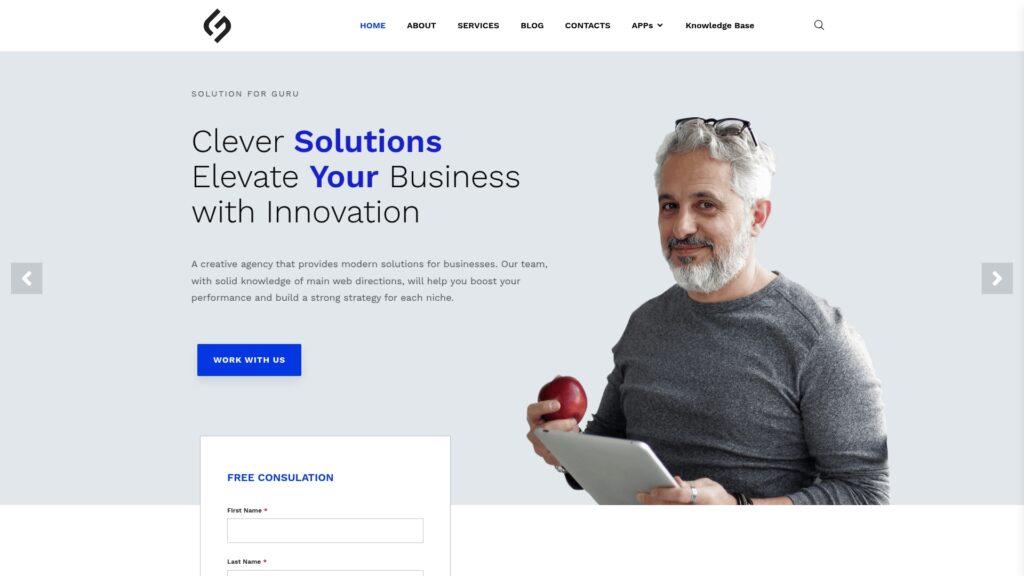
Expert Guidance Throughout Selection: Solution for Guru’s team helps you navigate the complex ITSM marketplace, understand your true requirements beyond surface-level needs, and identify the platform that best fits your organization. Their vendor-neutral approach ensures recommendations based on your interests, not sales quotas.
Accelerated Implementation: Leveraging proven methodologies and extensive experience with Freshservice, ManageEngine, Zendesk, and other leading platforms, Solution for Guru dramatically reduces implementation time while ensuring best practices are followed from day one. Their pre-built templates, workflows, and integration patterns mean you don’t start from scratch.
Customization Expertise: While out-of-the-box functionality is valuable, most organizations need some customization to match their specific processes. Solution for Guru’s technical experts design and implement tailored workflows, automation rules, and integrations that maximize platform value without creating maintenance nightmares.
Change Management Support: Technology is only part of the equation—successful ITSM requires people to adopt new processes and tools. Solution for Guru provides change management support, training programs, and communication strategies that drive adoption and minimize resistance.
Ongoing Optimization: ITSM is not “set and forget.” Solution for Guru offers continuous improvement services, helping you refine workflows, add new capabilities, optimize performance, and ensure your platform evolves with your organization’s changing needs.
Multi-Platform Expertise: Whether you choose Freshservice, ManageEngine, Zendesk, or need to migrate between platforms, Solution for Guru’s broad expertise means you have a long-term partner regardless of platform decisions.
Ultimately, partnering with Solution for Guru transforms your ITSM journey from a risky, resource-intensive project into a strategic initiative with predictable outcomes, faster time-to-value, and sustained success. Visit https://www.solution4guru.com/ to learn how they can help your organization achieve ITSM excellence.
Recommended:
- ITSM Change Management
- ITSM Integration: Streamlining IT Service Management for Modern Enterprises
- ITSM Problem Management
- What Are ITSM Ticketing Tools?
- ITSM Jobs: Your Guide to a Thriving Career in IT Service Management
- Why are ITSM Best Practices essential?
- What is an IT Management Service Provider?
- Comprehensive Guide to ITSM Tools: Features, Benefits, and Top Solutions
- What is IT Service Management (ITSM)?

